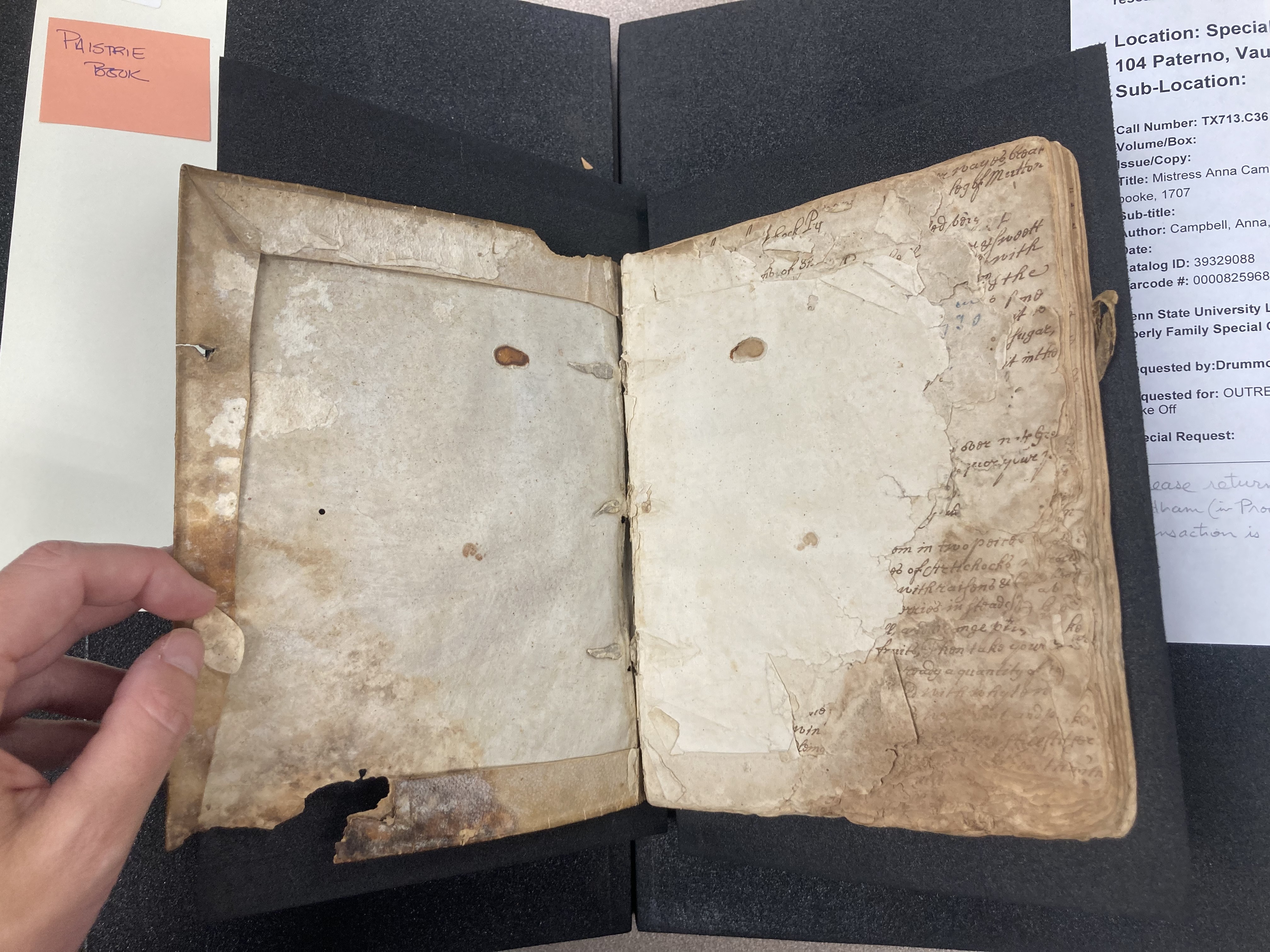This isn’t just French toast; it’s a culinary journey back to the 18th century, guided by Mistress Anna Campbell’s “Her Paistrie Booke” from 1707. We’re diving into a recipe for “French Tosts” that’s both simple and intriguing, offering a taste of history with a modern twist. This guide to modern cookery, scholar’s choice edition, brings a historical recipe to your kitchen.
About a year ago, I had the opportunity to explore Mistress Anna Campbell’s early eighteenth-century Scottish recipe book in the reading room at Penn State Libraries Eberly Family Special Collections. Campbell titled her manuscript “Her Paistrie Booke” and dated it 1707. My notes from that first encounter emphasized that Campbell’s book is indeed a deep dive into pastry and baking.
Campbell’s manuscript contains approximately 400 recipes, meticulously handwritten. The recipes are loosely organized, encompassing pies, pastries, cakes, tarts, custards, meat dishes, sauces, sweet and savory puddings, dairy creations, biscuits, and fruit preparations. The manuscript was digitized for the Historical Recipe Books Collection. You can access the catalog description and the complete digitized manuscript here.
When searching for recipes for this year’s Bake Off, Christina Riehman-Murphy suggested Campbell’s recipe book, specifically the recipe for “French Tosts”.
Deciphering the Recipe
The original recipe for French Tosts reads:
French Tosts Cutt prettie thick tosts of whyt bread, tost them befor the fyre broun, steep them in sweett Cream, or whyte wine, sugar, and orange Juice, soak them on Coalls in a clean dish between two dishes
This instruction blends simplicity with ambiguity. It calls for toasting bread, soaking it in cream, sugar, and orange juice (or white wine), and then cooking the soaked toast in a covered dish over hot coals. This method, common for pancakes and delicate fruit preserves, can be replicated while camping or grilling by toasting the bread and steaming it in a covered cast iron pan.
These recipes evoke memories of another historical French toast recipe and emphasize the use of day-old bread, eggs, and cream, elevated with imported flavors like sugar, spices, wine, and oranges. Campbell’s recipe allows swapping cream for white wine. A valid interpretation could suggest two versions: one with cream only, and another with white wine, sugar, and orange juice. The prepared version, using cream, sugar, and orange, created a distinct caramel flavor.
I tested this recipe using pre-sliced “White Sourdough Bread” without added sugar. This recipe adapts well to various breads, including gluten-free options.
A Modern Adaptation
This guide to modern cookery scholar’s choice edition wouldn’t be complete without a modernized version of the recipe.
Serves 2 (easily scalable!)
- 4 slices white bread
- 1 cup (250ml) cream
- ¼ cup (50g) sugar
- ¼ cup (62.5ml) orange juice
- Butter or oil for greasing
Equipment: toaster, skillet with a lid
- Toast the bread lightly.
- Combine cream and sugar until the sugar dissolves, then stir in the orange juice.
- Pour the mixture over the toast, ensuring each slice is coated. Let it rest for 5 minutes, then flip and repeat.
- Heat a skillet over medium heat with butter or oil.
- Cook two slices at a time for about 3 minutes per side, covered. Adjust heat and cooking times as needed. Set your lid askew for crispier slices.
- Serve immediately.
The Result: A Taste of History
The French Tosts offer a delightful blend of toasty malted milk and caramelized sugar, enhanced by a subtle hint of orange. The crispy edges and soft center make this dish a true pleasure.
While tempting to add toppings like honey and fresh fruit, these bold flavors can overpower the subtle malt and caramel notes. Savor a few bites before adding any enhancements.
The Great Rare Books Bake Off
Participate in the fifth annual The Great Rare Books Bake Off! This competition encourages exploring historical recipes. Bake this recipe and share your creations using #BakePennState or #BakeMonash. The competition runs October 5-13, 2024.
This “French Tosts” recipe, or other recipes like sugar bisket, doughnuts, almond jumballs, lemon tart, and chocolate cream, offer a tangible connection to the past, making cooking and baking more than just preparing food; it’s an act of historical rediscovery. This guide to modern cookery scholar’s choice edition helps you to enjoy a classic recipe.

